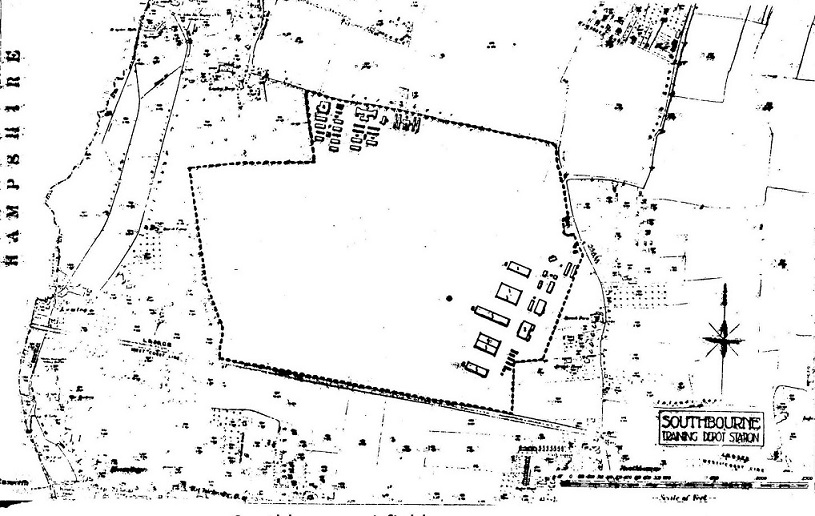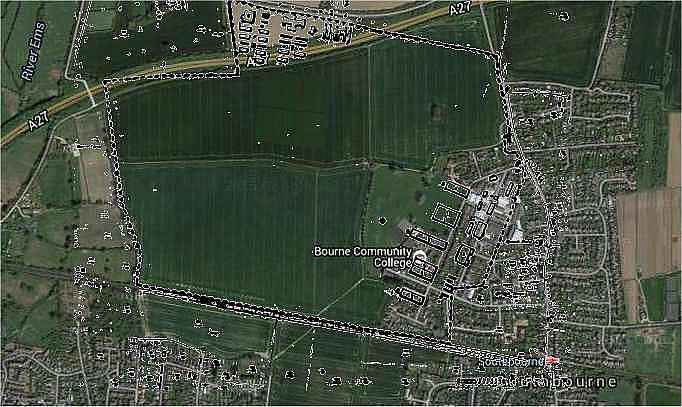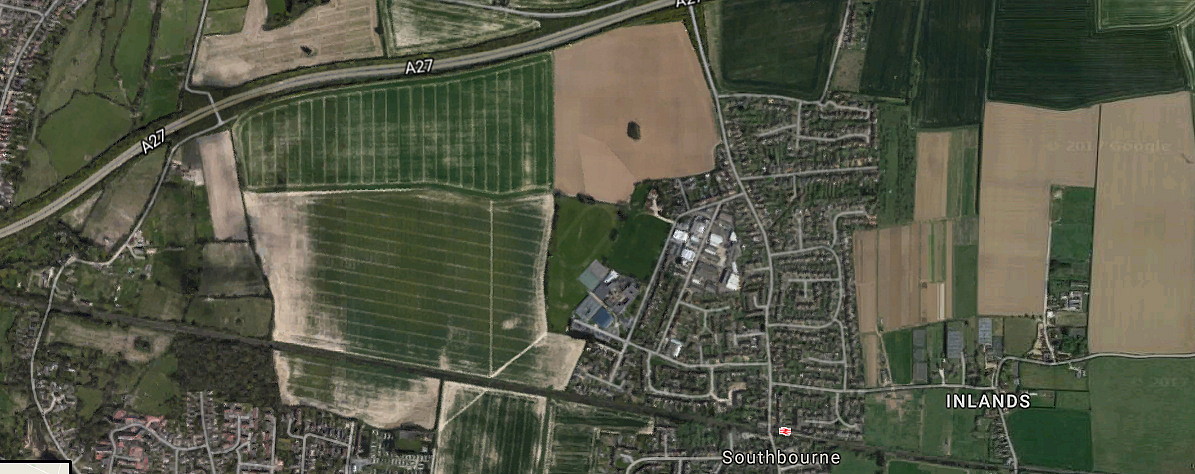Southbourne - Sussex
SOUTHBORNE: Military airfield under construction (Also known as EMSWORTH)
Military user: Intended as a training Depot Station for the USAAS (United States Army Air Service)
Location: S of the A27, just NW of Southborne and NE of Emsworth
ILLUSTRATIONS
Note: These three illustrations were very kindly sent in April 2018 by Ruth Heelan of the Southbourne Community Association. The second and third images are almost certainly derived from Google Earth images.
Site area: 247 acres 1189 x 883
NOTES: For it’s time this was going to be a big aerodrome and work was under way in 1918. Still incomplete by the time of the Armistace, work was finally abandoned in 1919.
But why list it if flying never took place? For a very good reason I think, to illustrate the hugely wasteful expense and effort waging a huge war involves. I have often wondered about this the more I learn - why on earth did the Allied forces in both WW1 and WW2 seem to continue the war effort when surely the “writing was on the wall” for the enemy?
I suppose one part of the answer lies in the fact that in both conflicts the Germans went into a demented frenzy towards the end of both wars, like putting male children into service in WW2. Faced with an enemy prepared to go to such extremes it is surely prudent to still aim at maximum effort right up until the bitter end?
There is another aspect too. A big war is damned good business and commercial aspects require things like huge supply contracts to be signed which can legally be both difficult, time consuming and costly to curtail. There are many instances of severe over-production going on even during these wars, with obsolete aircraft being produced when everybody involved must have realised they’d be scrapped very shortly after leaving the factory! But war equals profit and profit for some is the be all and end all regardless of circumstances.
Plus of course we must be mindful not to look at history with the benefit of hindsight. The world was a much different place in those days. Populations were much smaller, the military and government establishments were very much orientated towards decision making coming from the very top with little or no influence being tolerated from those who probably knew better. And, needless to say, the concepts of needing to protect the environment, conserve valuable resources and so on wouldn't be appearing, in the general public awareness, for well over half a century later.
We'd love to hear from you, so please scroll down to leave a comment!
Leave a comment ...
Copyright (c) UK Airfield Guide


















